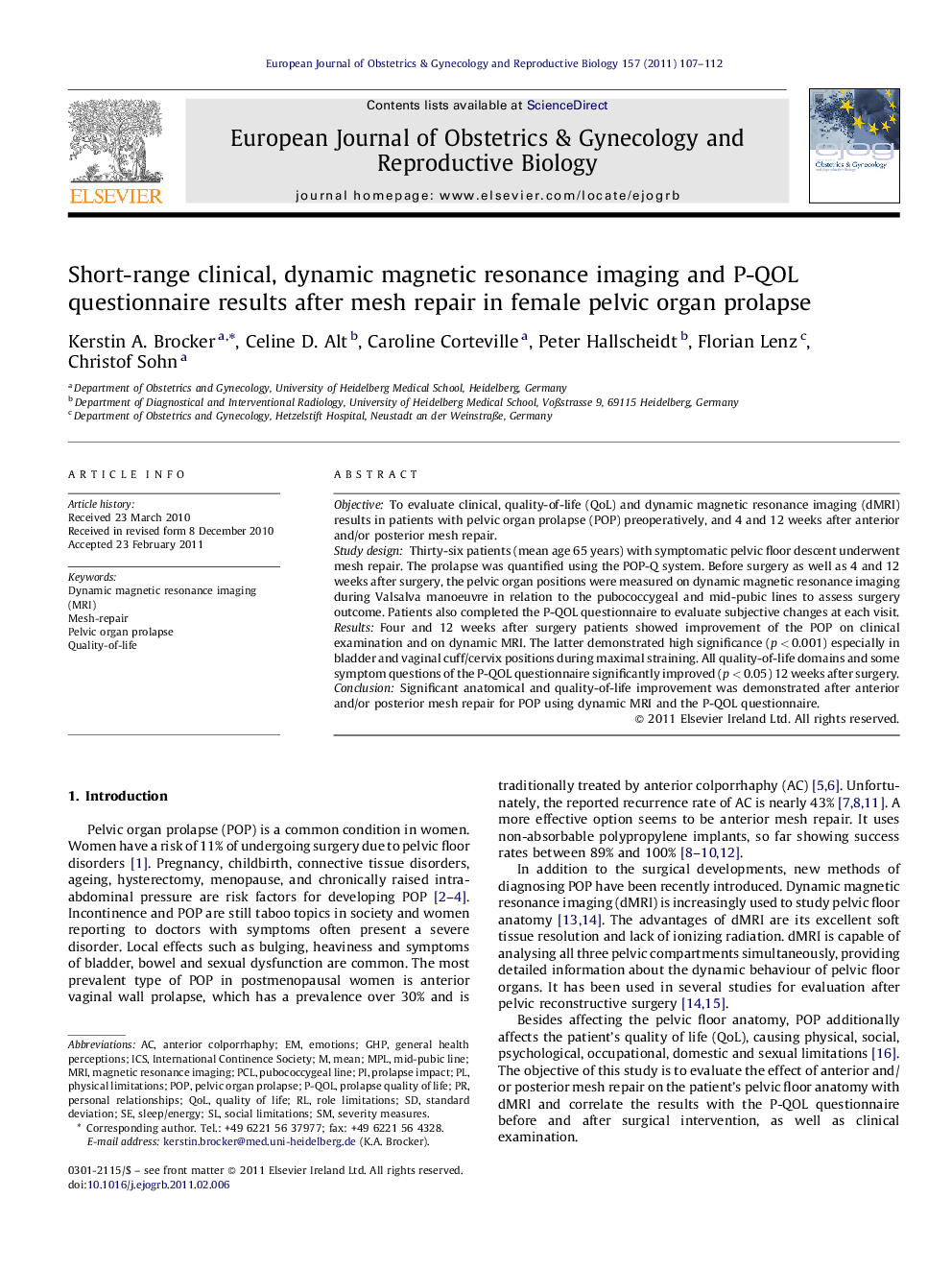| Article ID | Journal | Published Year | Pages | File Type |
|---|---|---|---|---|
| 3920560 | European Journal of Obstetrics & Gynecology and Reproductive Biology | 2011 | 6 Pages |
ObjectiveTo evaluate clinical, quality-of-life (QoL) and dynamic magnetic resonance imaging (dMRI) results in patients with pelvic organ prolapse (POP) preoperatively, and 4 and 12 weeks after anterior and/or posterior mesh repair.Study designThirty-six patients (mean age 65 years) with symptomatic pelvic floor descent underwent mesh repair. The prolapse was quantified using the POP-Q system. Before surgery as well as 4 and 12 weeks after surgery, the pelvic organ positions were measured on dynamic magnetic resonance imaging during Valsalva manoeuvre in relation to the pubococcygeal and mid-pubic lines to assess surgery outcome. Patients also completed the P-QOL questionnaire to evaluate subjective changes at each visit.ResultsFour and 12 weeks after surgery patients showed improvement of the POP on clinical examination and on dynamic MRI. The latter demonstrated high significance (p < 0.001) especially in bladder and vaginal cuff/cervix positions during maximal straining. All quality-of-life domains and some symptom questions of the P-QOL questionnaire significantly improved (p < 0.05) 12 weeks after surgery.ConclusionSignificant anatomical and quality-of-life improvement was demonstrated after anterior and/or posterior mesh repair for POP using dynamic MRI and the P-QOL questionnaire.
